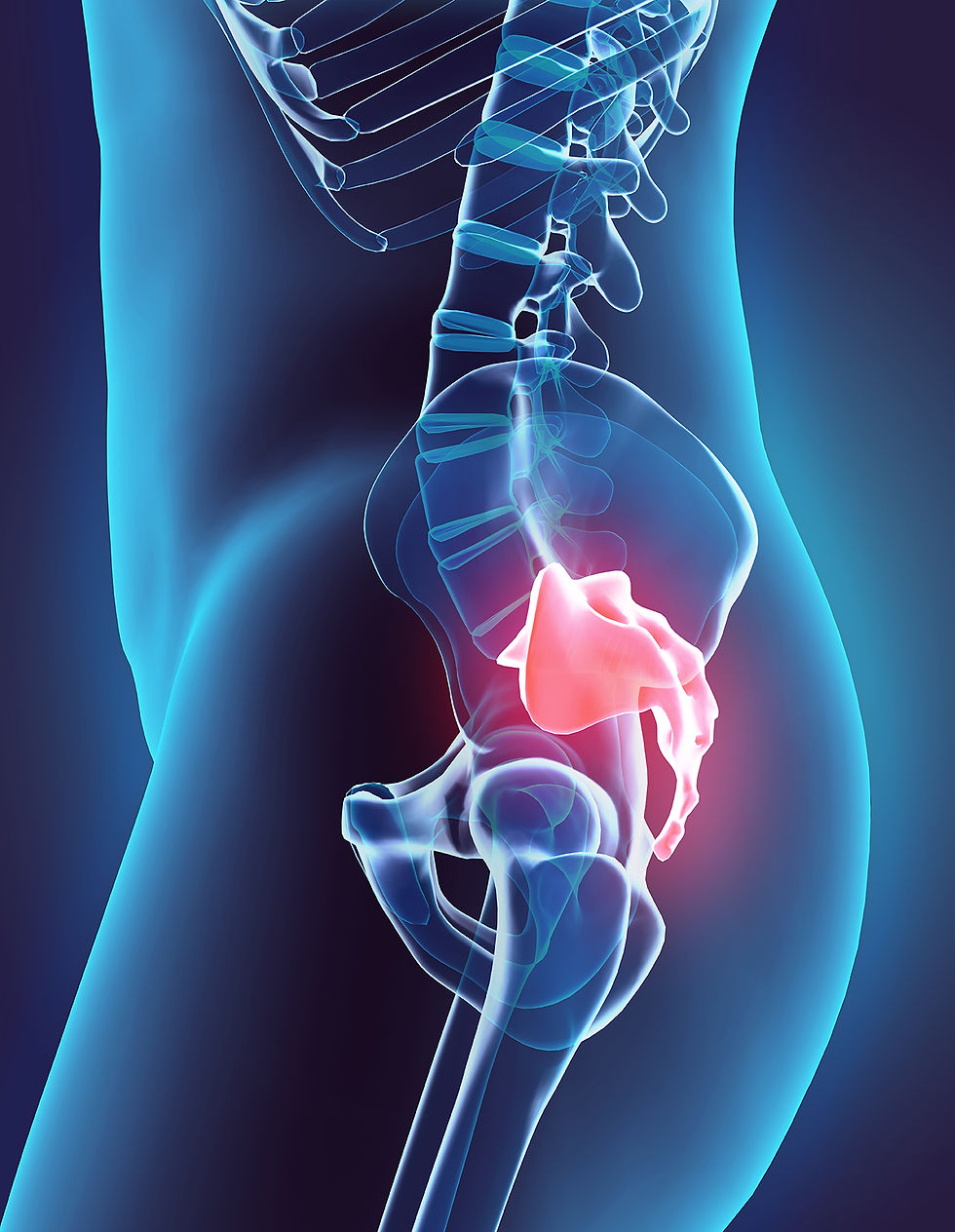
The coccyx, or tailbone, is formed by the fusion of three to five bones. The coccyx is located near the base of the spine, below the sacrum. Coccydynia refers to any discomfort in the tailbone. Coccydynia is frequently reported as achy or piercing pain. Pain might occur when sitting for an extended amount of time or even during bowel motions. It can also happen when the individual moves from a sitting to a standing posture. While most instances recover within a few weeks to months, for certain people, the discomfort can become chronic, affecting their quality of life. Because of the complexities of coccygeal pain, treatment might be challenging for these people.
CAUSES
The following are some of the most common causes of coccydynia:
INJURY OR TRAUMA :
Falling and falling on the coccyx can cause severe discomfort and potentially result in a coccyx injury. Failing on the back or buttocks might result in coccydynia or fracture or dislocation of the coccyx.
ATHLETIC ACTIVITIES :
Coccydynia can be caused by certain sports or physical activities. Coccydynia can be caused by sports or activities that impose pressure on the back or involve a lot of repetitive motion of the spine.
PREGNANCY :
Hormones soften the space between the sacrum and the coccyx during pregnancy. The softening permits the coccyx to shift during labor and delivery. The loose tissues may cause the coccyx to shift or reduce the support the tissues typically offer.
OBESITY :
Obesity can put extra pressure on your spine resulting in the coccyx slipping out of place.
SYMPTOMS
Tenderness accompanied by a dull, achy pain in the tailbone area, between the buttocks, is the most common symptom of coccydynia.
Pain worsens when sitting or leaning against your backside.
The pain usually reduces when you bend forward.
After defecation, the discomfort may aggravate.


Comments